Qinghong Lin
Deep Unsupervised Hashing with Latent Semantic Components
Mar 17, 2022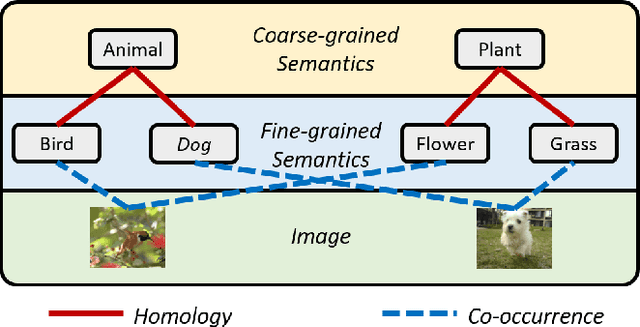
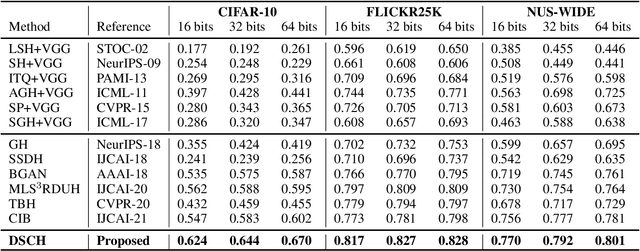
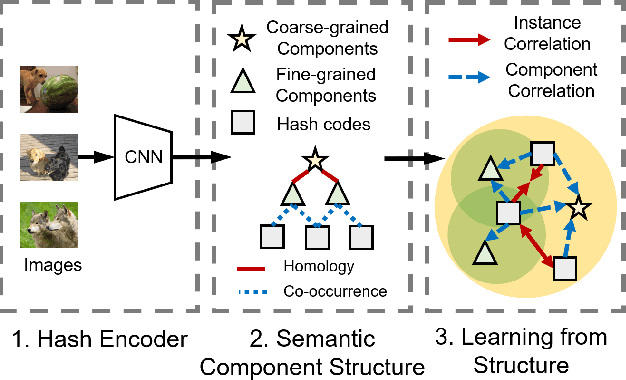

Abstract:Deep unsupervised hashing has been appreciated in the regime of image retrieval. However, most prior arts failed to detect the semantic components and their relationships behind the images, which makes them lack discriminative power. To make up the defect, we propose a novel Deep Semantic Components Hashing (DSCH), which involves a common sense that an image normally contains a bunch of semantic components with homology and co-occurrence relationships. Based on this prior, DSCH regards the semantic components as latent variables under the Expectation-Maximization framework and designs a two-step iterative algorithm with the objective of maximum likelihood of training data. Firstly, DSCH constructs a semantic component structure by uncovering the fine-grained semantics components of images with a Gaussian Mixture Modal~(GMM), where an image is represented as a mixture of multiple components, and the semantics co-occurrence are exploited. Besides, coarse-grained semantics components, are discovered by considering the homology relationships between fine-grained components, and the hierarchy organization is then constructed. Secondly, DSCH makes the images close to their semantic component centers at both fine-grained and coarse-grained levels, and also makes the images share similar semantic components close to each other. Extensive experiments on three benchmark datasets demonstrate that the proposed hierarchical semantic components indeed facilitate the hashing model to achieve superior performance.
Deep Self-Adaptive Hashing for Image Retrieval
Aug 21, 2021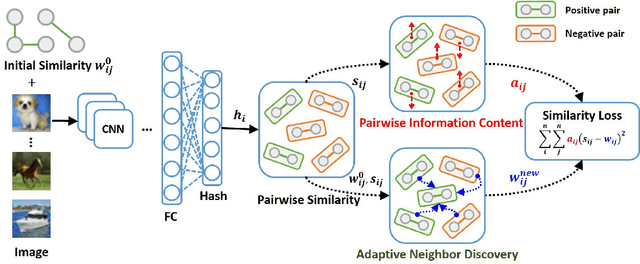

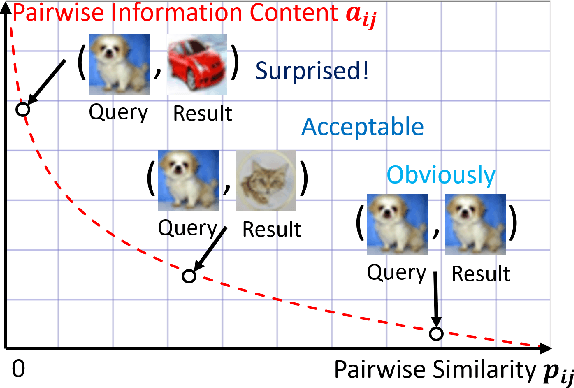
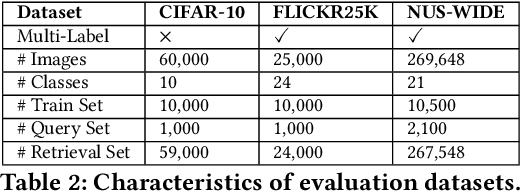
Abstract:Hashing technology has been widely used in image retrieval due to its computational and storage efficiency. Recently, deep unsupervised hashing methods have attracted increasing attention due to the high cost of human annotations in the real world and the superiority of deep learning technology. However, most deep unsupervised hashing methods usually pre-compute a similarity matrix to model the pairwise relationship in the pre-trained feature space. Then this similarity matrix would be used to guide hash learning, in which most of the data pairs are treated equivalently. The above process is confronted with the following defects: 1) The pre-computed similarity matrix is inalterable and disconnected from the hash learning process, which cannot explore the underlying semantic information. 2) The informative data pairs may be buried by the large number of less-informative data pairs. To solve the aforementioned problems, we propose a Deep Self-Adaptive Hashing (DSAH) model to adaptively capture the semantic information with two special designs: Adaptive Neighbor Discovery (AND) and Pairwise Information Content (PIC). Firstly, we adopt the AND to initially construct a neighborhood-based similarity matrix, and then refine this initial similarity matrix with a novel update strategy to further investigate the semantic structure behind the learned representation. Secondly, we measure the priorities of data pairs with PIC and assign adaptive weights to them, which is relies on the assumption that more dissimilar data pairs contain more discriminative information for hash learning. Extensive experiments on several datasets demonstrate that the above two technologies facilitate the deep hashing model to achieve superior performance.
Deep Superpixel Cut for Unsupervised Image Segmentation
Mar 10, 2021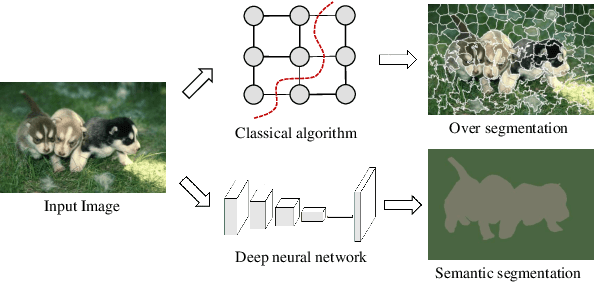
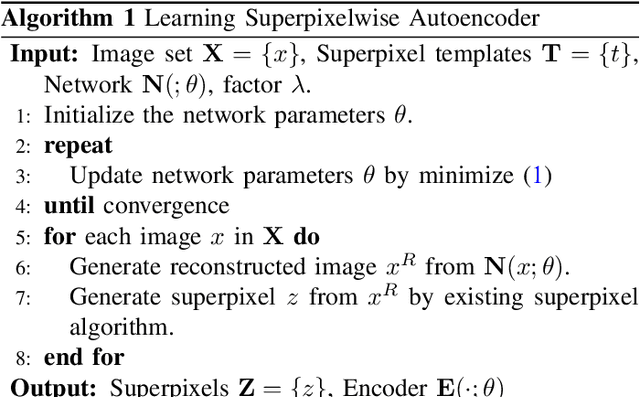
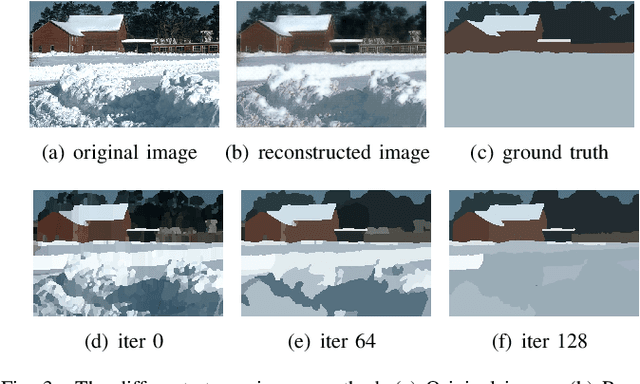
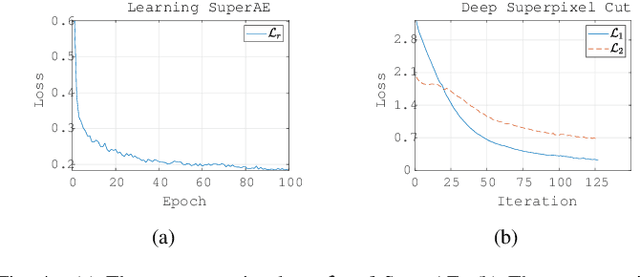
Abstract:Image segmentation, one of the most critical vision tasks, has been studied for many years. Most of the early algorithms are unsupervised methods, which use hand-crafted features to divide the image into many regions. Recently, owing to the great success of deep learning technology, CNNs based methods show superior performance in image segmentation. However, these methods rely on a large number of human annotations, which are expensive to collect. In this paper, we propose a deep unsupervised method for image segmentation, which contains the following two stages. First, a Superpixelwise Autoencoder (SuperAE) is designed to learn the deep embedding and reconstruct a smoothed image, then the smoothed image is passed to generate superpixels. Second, we present a novel clustering algorithm called Deep Superpixel Cut (DSC), which measures the deep similarity between superpixels and formulates image segmentation as a soft partitioning problem. Via backpropagation, DSC adaptively partitions the superpixels into perceptual regions. Experimental results on the BSDS500 dataset demonstrate the effectiveness of the proposed method.
 Add to Chrome
Add to Chrome Add to Firefox
Add to Firefox Add to Edge
Add to Edge